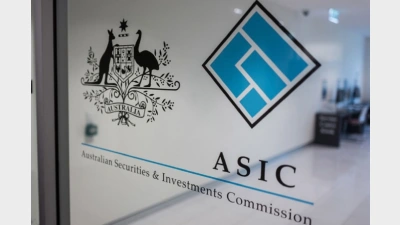(December-2003) Super students sharpen pencils on PS 146
The super industry is turning an important corner. Changes are under way that are steering business as we know it in a whole new direction, many of which stem from increased educational and compliance requirements. Not surprisingly, the face of the industry’s education sector is changing as well.
This year, for the first time since its inception in 1990, the Association of Superannuation Funds of Australia’s (ASFA) flagship diploma program has seen a drop in numbers.
The course — the Diploma of Superannuation Management — is regarded as the basic qualification for people working in super, and recently received a prestigious accolade, from the Business/Higher Education Round Table Awards, sponsored by the Department of Education, Science and Training.
ASFA’s Diploma of Superannuation Management, run in conjunction with Macquarie University, gained the 2003 Award for Outstanding Achievement in Collaboration in Education and Training by a small to medium enterprise.
This program, which attracts over 2000 enrolments a year, typically takes three to four years to complete by distance education.
Historically, the diploma course has reigned as the market’s most popular — to date, 1100 people from across Australia have graduated.
But ASFA education and training director Paul O’Brien says while the course has seen continuing demand, it has slowed down a little this year, with the focus really being on training for PS 146.
“The industry is very strongly focused on compliance at the moment, and has been willing to spend money on training. Eighteen months ago we introduced a single unit called ASFA 146, aimed at providing the knowledge needed for PS 146. We’ve had really big enrolments in that,” O’Brien says.
Enrolments in this particular course will obviously plateau post March 11. ASFA will also be adding some new courses to its agenda in the new year, delivering the Diploma and Advanced Diploma of Financial Services (Superannuation).
Among other things, these courses cover the competencies required by the Financial Services Reform Act and form building blocks towards achieving ASFA’s PS 146 course.
O’Brien says there’s a much stronger focus in the financial services industry generally on financial planning, with the major changes over the last year in super education occurring in conjunction with PS 146 requirements.
“When ASIC issued PS 146, the minimum training required for people in financial services had to map against competencies in the financial services training package. One area that was missing before was super, and now super has been added to that training package.”
As a registered training authority, ASFA will now issue qualifications from the financial services training package, and O’Brien expects the changes to lead to a wider range of service providers in the market in the years to come.
Recommended for you
The super fund is open to the idea of using crypto ETFs to invest in the asset class, but says there are important compliance checks to tick off first.
ASIC has launched civil penalty proceedings in the Federal Court against one of the super trustees wrapped up in the Shield Master Fund failure.
Industry associations have welcomed the Treasurer’s review into the superannuation performance test and called for targeted changes that would enable investment in certain assets with strong long-term performance.
Super funds are strengthening systems and modelling member benefits ahead of payday super.











